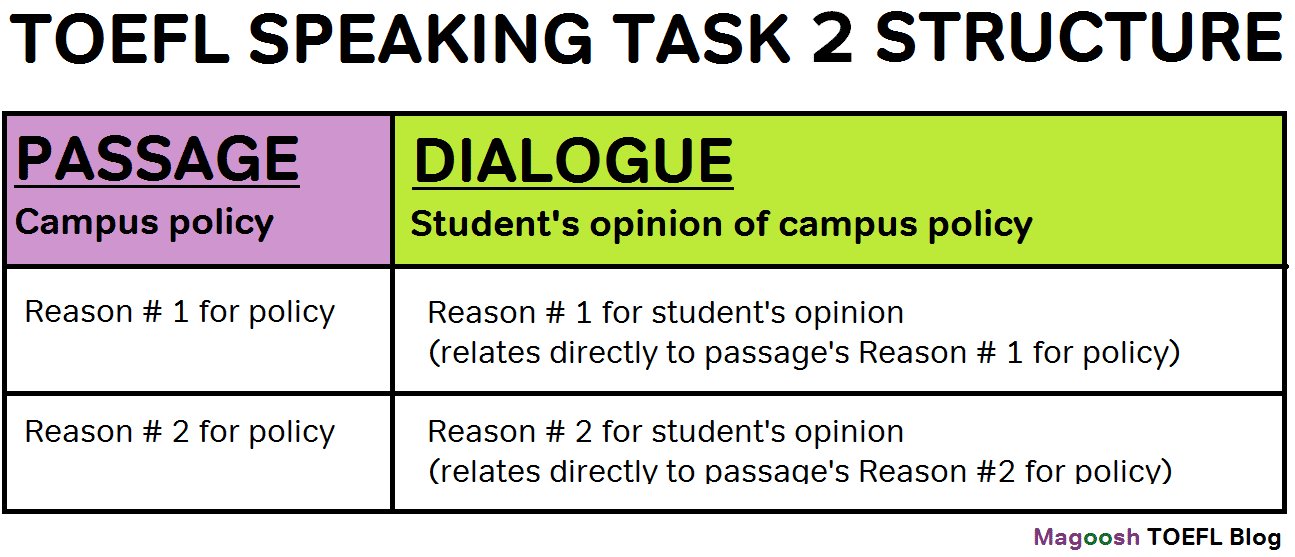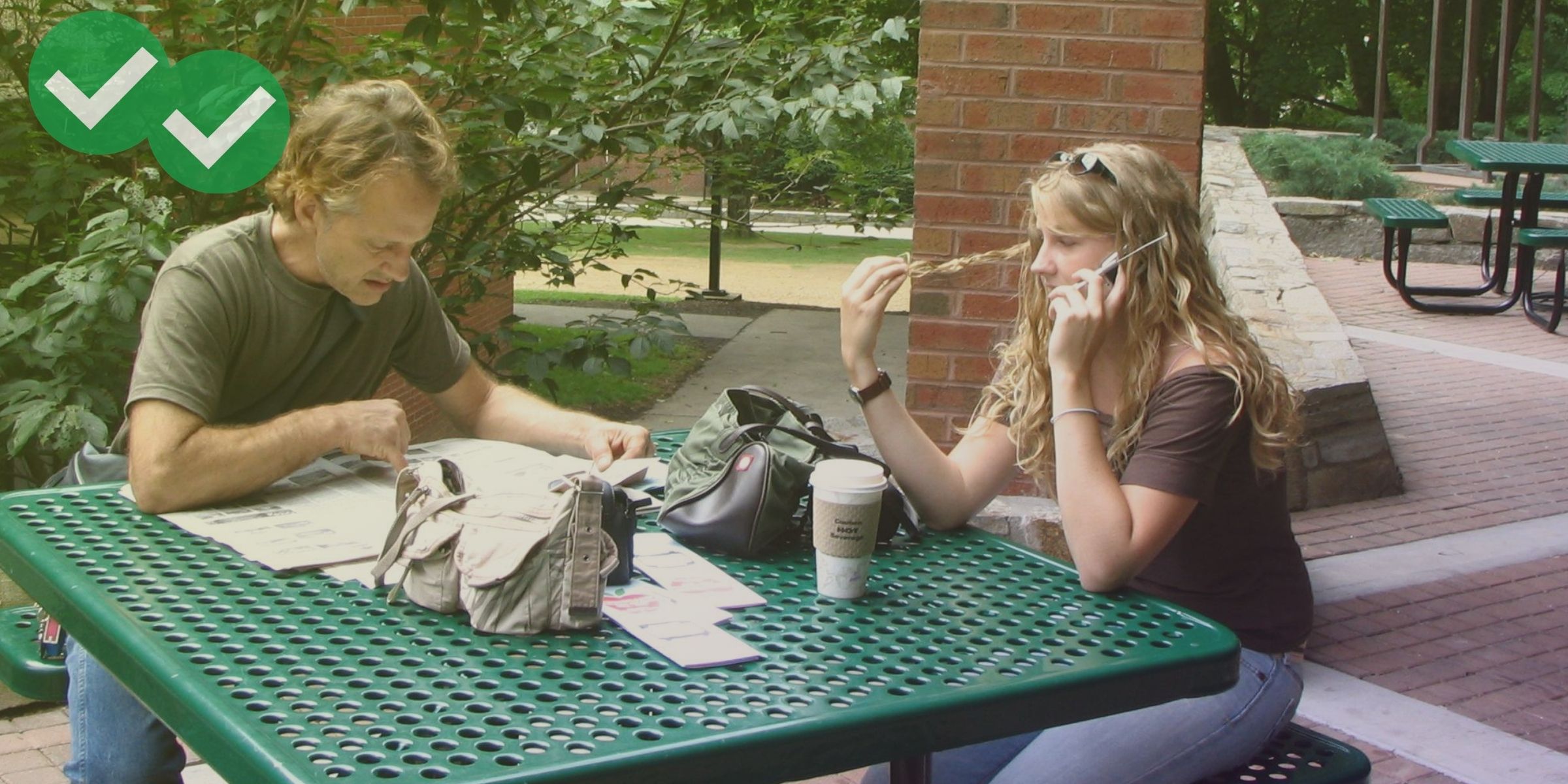
TOEFL Speaking Task 2 throws a lot of information at you. It can be hard to summarize it all in just 60 seconds. So here’s a sample TOEFL Speaking Task 2 example answer. This is the second example I’ve given you. My last TOEFL Speaking Task 2 example answer followed Magoosh’s TOEFL Speaking Task 2 flowchart template. This answer will follow Magoosh’s outline-based template for TOEFL Speaking Task 2.
Reviewing TOEFL Speaking Task 2: Prompt Structure and Outline-Based Template
Before we look at the example answer, let’s quickly review the structure of TOEFL Speaking Task 2/a>, and the TOEFL Speaking Task 2 outline-based template I’ll use in my response.
The structure of the Task 2 prompt is summed up nicely in this graphic:

And the template I’m about to use follows this outline:
- Summarize passage’s policy, reasons for the policy (speak for about 12 seconds)
- Say whether the student agrees or disagrees with the policy (speak for about 3 seconds)
- Summarize student’s response to passage’s reason # 1 for policy (speak for 15-20 seconds)
- Summarize student’s response to passage’s reason # 2 for the policy (speak for 15-20 seconds)
- Restate/summarize the student’s main thesis (do this only if there’s time left over).
TOEFL Speaking Task 2 Example Answer: Outline-Based
The example answer I’m about to give you includes example notes, audio of my response, and transcript of the audio.
Like the previous example answer, this answer is also a response to the TOEFL Speaking Task 2 prompt found in TOEFL Quick Prep. The passage for this prompt appears on page 18 of the TOEFL Quick Prep Volume 3 PDF. To hear the conversation for this prompt, go to the link for TOEFL Quick Prep Volume 3 Track 9. And for a transcript of the conversation, go again to the Quick Prep v3 PDF, and scroll down to page 37.
Example response notes:
- policy: classical music in cafeteria
- reasons: students relax, no headphones, interact
- student disagrees
- students busy at lunch
- classical music not popular, encourages headphones
Example response audio:
Example response transcript:
The university announces that they’ll be playing classical music in the school cafeteria so students can relax on their lunch break and also take off their headphones and talk to each other a little bit more.
The student disagrees with this policy.
He says that actually, students are quite busy at lunch, and they’re not really going to want to relax and just listen to classical music. They need to do homework, and they need to to study during lunch.
The student also points out that classical music really isn’t that popular among college kids. So, the student says if you play classical music, students are actually more likely to just put on their headphones and want to listen to their own music, so that’s going to really reduce the amount of interaction that they have.
So yes, for those reasons, he feels it won’t work to play classical music in the lunchroom for the university’s purposes.
Comparing the Two Example Responses for TOEFL Speaking Task 2
Let’s compare this example response (outline-based template) and the previous example response I gave you (flowchart template). Both responses are similar. I say the same things and cover the same information either way.
However, there still is one important difference between this example response and the my flowchart-based example response. The difference is in the way I felt when I used each template. Personally, I’m a very visual learner. So the flowchart template felt a lot more natural for me. You may be able to hear this difference if you listen to the two recordings again. I sound more comfortable delivering a flowchart-based speech. And I sound a little bit less comfortable building my speech around the “notes” template.
I’m telling you this because there is a secret to choosing the right kind of template for your TOEFL Speaking: choose the template that works best for you. As you compare these templates and Magoosh’s full TOEFL Speaking Template PDF, find and use the templates that match your speaking and learning style.






Leave a Reply